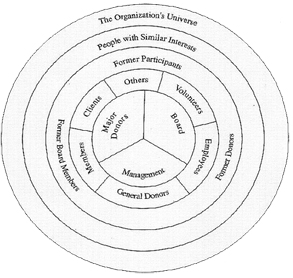
“Felix with Balloon” by Aurora Stokum, age 13
My 13-year-old daughter Aurora has aspired to be an artist from the moment she first picked up a pencil. And frankly, she has been blowing me away with her artwork since she was five. The picture here is one she drew last fall. I know I’m her mom and I’m biased, but I love seeing the manifestations of her imagination and skill development.
Given her goals, this past fall Aurora found a visual arts high school program that she declared she “must attend” and enthusiastically set to work preparing her portfolio and application. Amongst ongoing accolades and assurances, I think we were both lulled into a sense of security that the school would naturally appreciate her talents and accept her. So it was a bit of a shock last week to receive the email that began: “I sincerely regret to inform you…”
Does this phrase sound familiar? Does it affect you the way that it affects me each time? As a grant writer and fundraiser for 15 years, I have received my fair share of rejection letters from foundations, along with polite and not-so-polite refusals to my appeals for support. While there’s always some of the kick-to-the-stomach element, I’m learning to roll with the punches.
Sometimes despite our best intentions and hard work, things just don’t follow Plan A. For my family, this past week has challenged us, but it has also provided opportunities for reflection and redirection. In between Aurora’s tears and tantrums there have been moments of hope, new possibilities to be explored, and a renewed resolve and determination as we figure out what the next steps are for her. These are all qualities I hope to channel and pass along to you.
So what does Plan B look like for a nonprofit?
1. Diversify Your Pie

Sometimes Plan B actually starts with Plan A. Just as Aurora and I pinned all her goals on one school, too often nonprofits fall into the trap of putting their eggs in one basket, and leaning too heavily on a single revenue source, whether it is a government grant or a major donor. Diversity is the key to strength in so many aspects of our world.
When you are creating your fundraising plan and budget, take a minute to play with your Excel tools and create a pie chart. Calculate each revenue stream as a percentage of the total revenue amount. How does your pie look? Would any of the pieces leave a gaping hole if you removed them; one that couldn’t be covered or compensated for by the other pieces? Ideally, your organization’s revenue should be made up of diverse pieces of pie, so that if one piece falls on the floor you still have others to provide the sustenance you need.
2. Hold Your Vision

It’s easy to panic when something doesn’t go the way we expected. And when our path is blocked it often seems easier to turn around and follow the road back to the beginning, rather than to trail-blaze into the unknown. However, the road less traveled is often the one that leads to innovation. The important thing is to keep your compass focused on your goal, so that you don’t get lost when you veer off the known path.
Okay, enough with the metaphorical mouthful. What I really want to get across here is don’t lose sight of your vision, and the hard work you’ve put in to get to this point. When the going gets tough, take a hard look at your end goals, be they dollar amounts, event attendees, or having a nice meal at the Restaurant at the End of the Universe.

Rosso’s Concentric Circles of Giving
3. Circle Your Wagons
In the world of fundraising there is a model known as Rosso’s Concentric Circles of Giving. It holds that the center of the circle is comprised of the people who are closest to your organization – Board members, major donors, and management staff. As you move further from the center you encounter people who are less involved. While the goal of a good fundraising strategy is to encourage stakeholders to move towards the center of your circle and strengthen their relationships with your organization, at the same time the foundation of fundraising efforts lie with the group already invested, and therefore fundraising should begin in the center and spread outwards.
What does all this mean? When you are scrambling for a Plan B, turn to your inner circle first. Gather your advisors and stakeholders, and start brainstorming. By involving them in the realities of unexpected setbacks and asking for their input in moving forward, you will also strengthen their social investment in the organization. As humans, we want to see the things that are most meaningful to us succeed, and it makes us feel good when we know we played a role in creating that success.
4. Anticipate, Assess, Act
The best way to veer into the unknown territory of Plan B is to scout ahead and see the roadblocks (along with the possible new paths). Having a strong fundraising plan in place – with benchmarks and interim goals – will help you see any obstacles and make a plan to move around them before they become insurmountable. Whether you are creating a 12-month comprehensive fundraising plan or a three-week social media campaign, build in some benchmarks that you can check in on at regular points. This will not only provide you with in-the-moment feedback on your progress, but will give you points to look back on in future planning.
Next Steps
This week has been an important life lesson for Aurora (and for me as well). While everything worth achieving in life takes hard work, hard work in and of itself is not a guarantee of success.
If we always succeeded, we would never have a reference point by which to measure ourselves. We must be willing to accept our challenges as starting points for new paths, and continue to let our imaginations and innovations move us forward to achieving our goals.
Thanks for reading! If any part of this was informative and/or entertaining for you, and you are not already on my mailing list, you can join now on the CONTACT page to receive regular posts on nonprofit development ideas.
You don’t have to let Plan B take you by surprise. I can help you craft a comprehensive fundraising plan, identify new sources of funding, and cultivate stronger relationships with your donors. Email me at [email protected], or connect with me on Facebook and LinkedIn.
